Battle of the X670E Flagships: Testing MSI, Asus and Gigabyte’s Best
Three flagship-class X670E boards go head to head to see who reigns supreme!
No one loves the fact that motherboard prices keep going up (except probably the motherboard makers themselves). But there’s no denying that flagship boards still pack in the most complete and most interesting collection of features, along with high-end specs in an attempt to draw in those looking for the best of the best to build their new system around. And with AMD’s new Ryzen 7000X3D CPUs arriving with impressive performance, it’s likely that more people will be looking to build rigs based around AMD’s X670E chipset.
So here we’ll be looking at a few flagship AMD boards from Asus, Gigabyte and MSI. Similar to our Z790 flagship roundup on the Intel side, we’ll detail three (of four) flagship motherboards from the B670E platform. We’ll test and discuss the MSI X670E Godlike ($1,299), Asus Crosshair X670E Extreme ($999), and the Gigabyte X670E Aorus Xtreme in detail, and also cover the notably less expensive (but flagship nonetheless) ASRock X670E Taichi ($479.99). All boards offer a premium appearance, overkill power delivery, PCIe 5.0 slots, and M.2 sockets. Are any of these worth the price? Of these, which should you choose?
The biggest difference between these boards is the price. From the sub-$500 Taichi to the nearly $1300 Godlike, there’s a huge gap from least to most expensive. The problem (for the consumer) is that aside from just price, there isn’t a $700 difference between them on any front, including performance. While some VRMs are better, even the worst (and I use that term loosely) easily handles the Ryzen 9 7950X without issue. It comes down to how many and what speed M.2 sockets you desire, if you’re OK with last-gen flagship class audio or your want the latest and greatest, and finally, 40 Gbps USB ports.
We’ll dig into all of this and more shortly to see if any of these high-end options can earn a slot on our Best Motherboards list. But it’s undeniable that the ASRock board has a fighting edge with its (comparatively) low price and impressive specifications. But first, here are the specifications for our first subject, MSI’s X670E
Specifications: MSI X670E Godlike
| Socket | LGA1718 |
| Chipset | X670E |
| Form Factor | E-ATX (288 x 305mm) |
| Voltage Regulator | 27 Phase (24x 105A SPS MOSFETs for Vcore) |
| Video Ports | ✗ |
| USB Ports | (2) USB 3.2 Gen 2x2, Type-C (20 Gbps) |
| (7) USB 3.2 Gen 2 (10 Gbps) | |
| Network Jacks | (1) 10 GbE |
| (1) 2.5 GbE | |
| Audio Jacks | (5) Analog + SPDIF |
| Legacy Ports/Jacks | ✗ |
| Other Ports/Jack | ✗ |
| PCIe x16 | (3) v5.0 (x16, or x8/x8/x4) |
| PCIe x8 | ✗ |
| PCIe x4 | ✗ |
| PCIe x1 | ✗ |
| CrossFire/SLI | Supports AMD Multi-GPU |
| DIMM Slots | (4) DDR5 6666+(OC)*, 128GB Capacity |
| • 1DPC 1R Max speed up to 6666+ MHz | |
| • 1DPC 2R Max speed up to 6000+ MHz | |
| • 2DPC 1R Max speed up to 6400+ MHz | |
| • 2DPC 2R Max speed up to 4000+ MHz | |
| M.2 Sockets | (1) PCIe 5.0 x4 (128 Gbps) / PCIe (up to 80mm) |
| (3) PCIe 4.0 x4 (64 Gbps) / PCIe (up to 80mm) | |
| (2) PCIe 5.0 x4 (128 Gbps) / PCIe (up to 80mm via M.2 Expander) | |
| (NVMe supports RAID 0/1/10) | |
| SATA Ports | (8) SATA3 6 Gbps (Supports RAID 0/1/10) |
| USB Headers | (1) USB v3.2 Gen 2x2 (20 Gbps), Type-C |
| (1) USB 3.2 Gen 2 (10 Gbps), Type-C | |
| (2) USB v3.2 Gen 1 (5 Gbps) | |
| (2) USB v2.0 (480 Mbps) | |
| Fan/Pump Headers | (9) 4-Pin (CPU, Pump, System) |
| RGB Headers | (3) aRGB (3-pin) |
| (1) AURA RGB (4-pin) | |
| Diagnostics Panel | (1) 2-digit Debug LED |
| (1) EZ Debug LED | |
| Internal Button/Switch | Power/Reset buttons |
| SATA Controllers | ASMedia ASM1061, ASM1064 |
| Ethernet Controller(s) | (1) Intel I225C (2.5 GbE) |
| (1) Marvell AQC113CS-B1-C (10 GbE) | |
| Wi-Fi / Bluetooth | AMD Wi-Fi 6E (2x2 ax, MU-MIMO, 2.4/5/6 GHz, 160 MHz, BT 5.3) |
| USB Controllers | ASMedia ASM3241 |
| HD Audio Codec | Realtek ALC4082 (ESS SABREES9280AQ DAC/HPA) |
| DDL/DTS | ✗ / ✗ |
| Warranty | 3 Years |
Inside the Box of the MSI MEG X670E Godlike
The X670E Godlike, like it’s Z790 Godlike twin, includes a slew of accessories as value adds (like the M.2 Expander card, and M-Vision Dashboard display) and things to get you started like a USB driver stick and SATA cables. Below is a complete list of the included accessories.
- M-Vision dashboard
- Wi-Fi antenna
- USB drive (drivers)
- M-Vision cable
- (3) SATA cables
- 1 to 2 RGB LED extension Y cable
- ARGB extension cable
- 1 to 3 ARGB Gen 2 extension cables
- (2) DP to Mini DP cables
- EZ Front panel cable
- Metal Dragon badge
- (4) M.2 screw/standoffs EZ M.2 clips
- Cable Stickers
- Quick Installation Guide
Design of the X670E Godlike

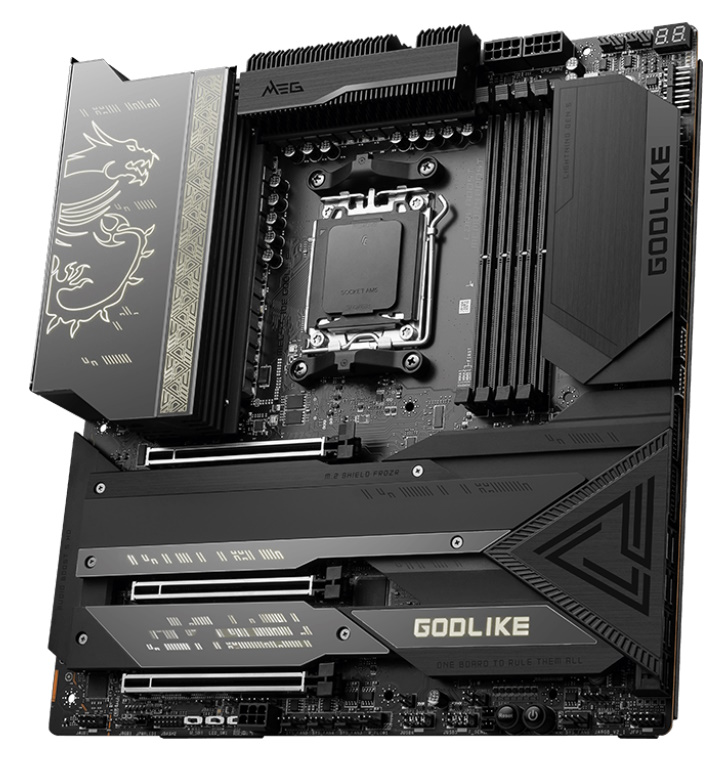

After removing the board from the retail packing, one of the first things I noticed outside of the stealthy black appearance is the sheer size and weight. It’s an E-ATX board nearly 12 inches wide, so you must ensure your case supports it. A backplate protects the back, doubling as a passive heatsink for the power delivery. The all-black appearance has a brushed aluminum finish on the heatsinks and shrouds, along with tastefully implemented branding on the IO area, chipset, VRM and M.2 heatsinks. The connections on the right side of the board are oriented horizontally, which helps with cable management.
Regarding RGB lighting, here again, only the IO area is illuminated. The colors are nice and saturated, but they won’t take over the inside of your chassis. If you need more, there are four headers to add lighting. Control over the RGBs is managed through the MSI Center Software and Mystic Light. Like its Z790 twin, I like the black-with-gold accents look. It matches most build themes and gives off that high-end vibe you want with a flagship-class motherboard.
Focusing on the top half of the board, starting with the left side above the IO area, is an Illusion Lighting effect that allows the board to display two distinct patterns (MSI Gaming Dragon and symbol) in the same space. I like this better than the dot-matrix look on the ROG Extreme. The VRMs connect via heatpipe with the top heatsink using a wavy fin design to increase surface area and dissipation properties.
Get Tom's Hardware's best news and in-depth reviews, straight to your inbox.
To the right of the socket area and just above the DRAM slots are two 8-pin EPS connectors (one required) to power your AMD CPU. The four DRAM slots below support up to 128 GB of RAM, with speeds listed to DDR5-6666+(OC) (though that’s using one DIMM). During testing, we had no issues with our ‘base’ kits (DDR5-5600 and 6000). AMD tends to top out around 6200-6400 MHz, depending on the board and memory used.
Continuing to move right and in a unique location, we hit the first (of four) M.2 sockets. Hidden under a large flat heatsink, this CPU-connected socket runs at PCIe 5.0 x4 (128 Gbps) and supports up to 80mm modules.
In the upper-right corner is the first two (of nine) 4-pin fan headers. Each header supports DC and PWM modes with varying output. The CPU fan (auto mode by default) outputs up to 2A/24W, Pump fans up to 3A/36W, and the system fan headers at 2A/12W each (though the manual says 2A/12W). In short, there’s plenty of power to support your fans or a water-cooling pump for a custom loop.
Moving down the edge, we run into the first two RGB headers (in this case, two 3-pin ARGB), a 6-pin PCIe connector for the quick charging capability, 24-pin ATX to power the board, and finally, two front panel USB 3.2 ports with one 3.2 Gen 2 (10 Gbps) and the other 3.2 Gen 2x2 (20 Gbps). Oddly, there isn’t a 40 Gbps port on this board. Although many will not utilize that much speed, the lack of one of this platform’s new features on a flagship board just feels like an odd omission.
For power delivery, this Godlike, like its Intel-based twin, also has Godlike VRMs. Power travels down from the EPS connector(s) onto a Renesas RAA229628 controller to the 24x 105A Renesas RAA22010540 SPS MOSFETs in a teamed configuration. The 2,520A available for the CPU is the most I can recall seeing on an AMD motherboard and won’t get in the way of any type of overclocking, including using liquid nitrogen. You’re limited by the cooling method, just as you are with most mid-range boards. As awesome as this is for marketing, it raises the cost of the BOM, just for bragging rights.
On the bottom half of the board, we find the rest of the M.2 sockets, several headers, connectors, and even a few switches. The audio section on the left houses a Realtek ALC4082 codec and ESS ES9280AQ combo DAC/HPA. This is the flagship codec, with a DAC and Amp combo, and one of the better audio implementations for the AM5 platform.
Moving back to the M.2 sockets, three others are hidden below the heatsinks in this area. These M.2 sockets (M.2_2-4) connect through the chipset. Each socket supports up to 80mm modules with speeds reaching PCIe 4.0 x4 (64 Gbps). If you want/need more than the four onboard M.2 sockets, you’re in luck, as MSI includes the M.2 Expander-Z Gen 5 Dual AIC. The AIC supports up to two PCIe 5.0 x4 (128 Gbps) drives when connected to a PCIe 5.0 -capable slot (PCI_E2 on this board). The Xpander card has active cooling to keep hot-running drives within spec, and it even has an activity light so you can see when the device is in action.
Shifting focus past the chipset to the right edge, we see two USB 3.2 Gen 1 (5 Gbps) connectors and eight SATA ports. SATA ports 3/4 connect through the chipset, while SATA A1/A2 connect through the ASM1061 chip, and SATA B1-B4 connect through an ASM1064 controller. The X670E Godlike supports RAID0/1 modes for SATA devices on SATA P3/4, while the NVMe drives support RAID0/1/10 modes.
If you plan on plugging in lots of drives, it’s worth mentioning here how things break down in terms of bandwidth. When the M2_4 (the PCIe 5.0 x4 socket) is populated, PCI_E2 (the second PCIe slot) is unavailable. If you’re using a SATA- or PCIe-based drive in M2_5, SATA ports 5-8 are unavailable, leaving you with just two functioning SATA ports available.
The PCIe slots mixed in among the M.2 sockets are simple. Both are reinforced and PCIe 5.0. The top slot supports up to x16 speeds, but both run at PCIe 5.0 x8 speeds when the second slot gets populated. Last, along the right edge, are two USB 3.2 Gen 1 (10 Gbps) headers and the six SATA ports.
Across the bottom of the board are several exposed headers, all vertical. You’ll find the usual, and quite a bit more: additional USB ports, RGB headers, fan headers, custom water cooling headers (for flow and temperatures), power/reset buttons, and more. Below is a complete list from left to right.
- Front panel audio
- 4-pin RGB
- JDASH1 (M-Vison)
- 6-pin PCIe power
- LED and BIOS switches
- (4) 4-pin fan/pump headers
- 2-pin waterflow header
- (2) USB 2.0 headers
- (2) 2-pin temperature sensor headers
- Power/Reset buttons
- Front panel
- 4-pin RGB
The rear IO plate on the X670E Godlike comes preinstalled to the motherboard. It has a black background with light-grey labels on the ports, making them relatively easy to read. There are a total of nine USB ports: two Type-C (20 Gbps) and seven 3.2 Gen 2 (10 Gbps) ports. On the left are three buttons: Clear CMOS, BIOS Flash, and the Smart button. The latter is programmable, letting you do things like reset the PC, boot into Safe Mode, control fans and lighting, etc. Around the USB ports are the Marvell 10 GbE and Intel 2.5 GbE ports. Last but not least are the Wi-Fi antenna connections and the five-plug plus SPDIF audio stack.
Firmware
MSI’s BIOS for the Godlike is not much different than the Z790 Godlike we reviewed previously. The menus reside on the sides, and information up top, with a black and red background. It’s a unique look compared to the competition. For X670E, the only updates were functionality for the new processors and chipset. The color scheme is still easy to read, and the informative Easy Mode displays various information about the system and allows for some changes (boot order and XMP enabled). Though different than other UEFIs, it is easy to get around; everything has a place, and most frequently used options are readily available, not buried within sub-menus.

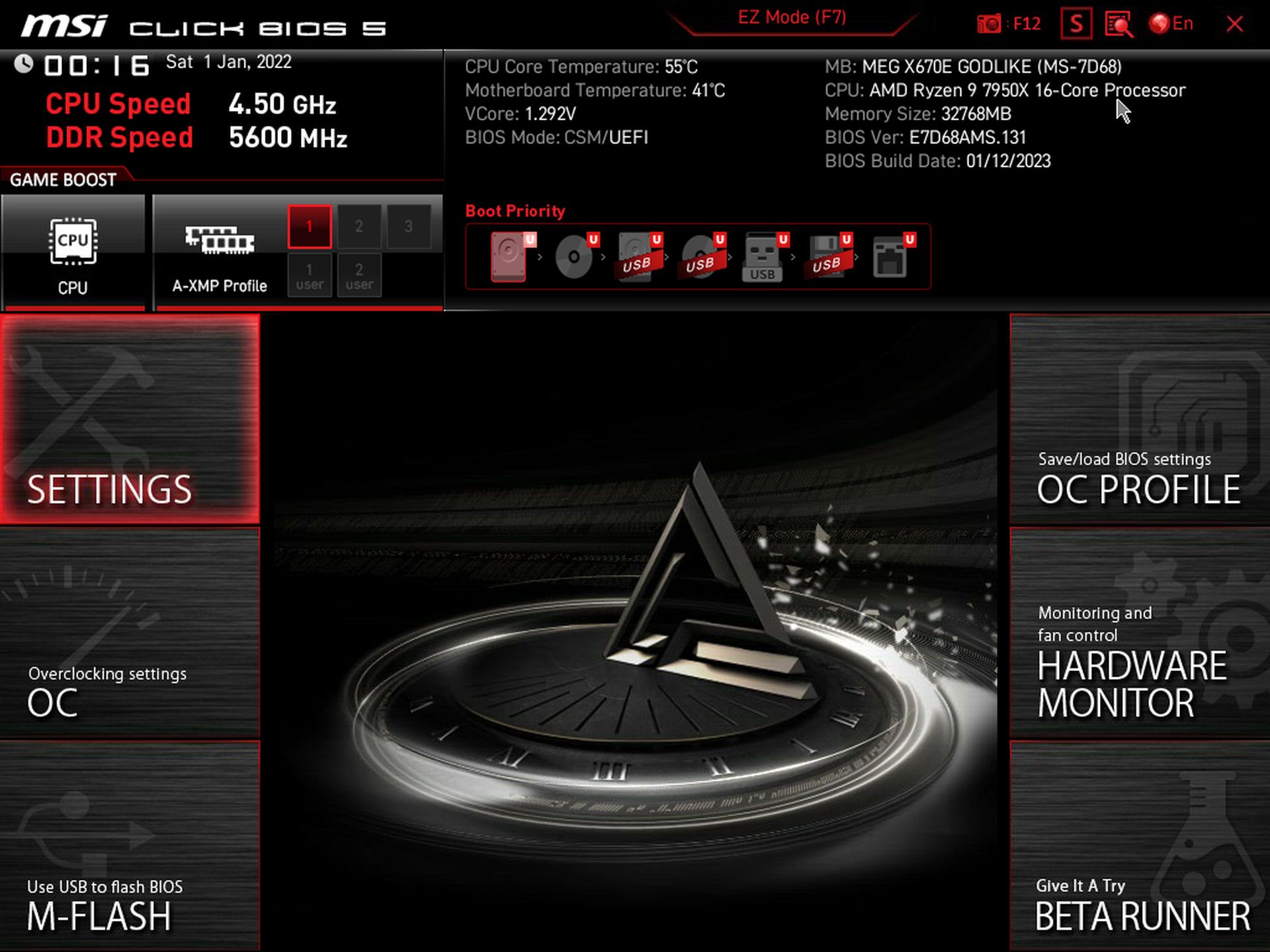





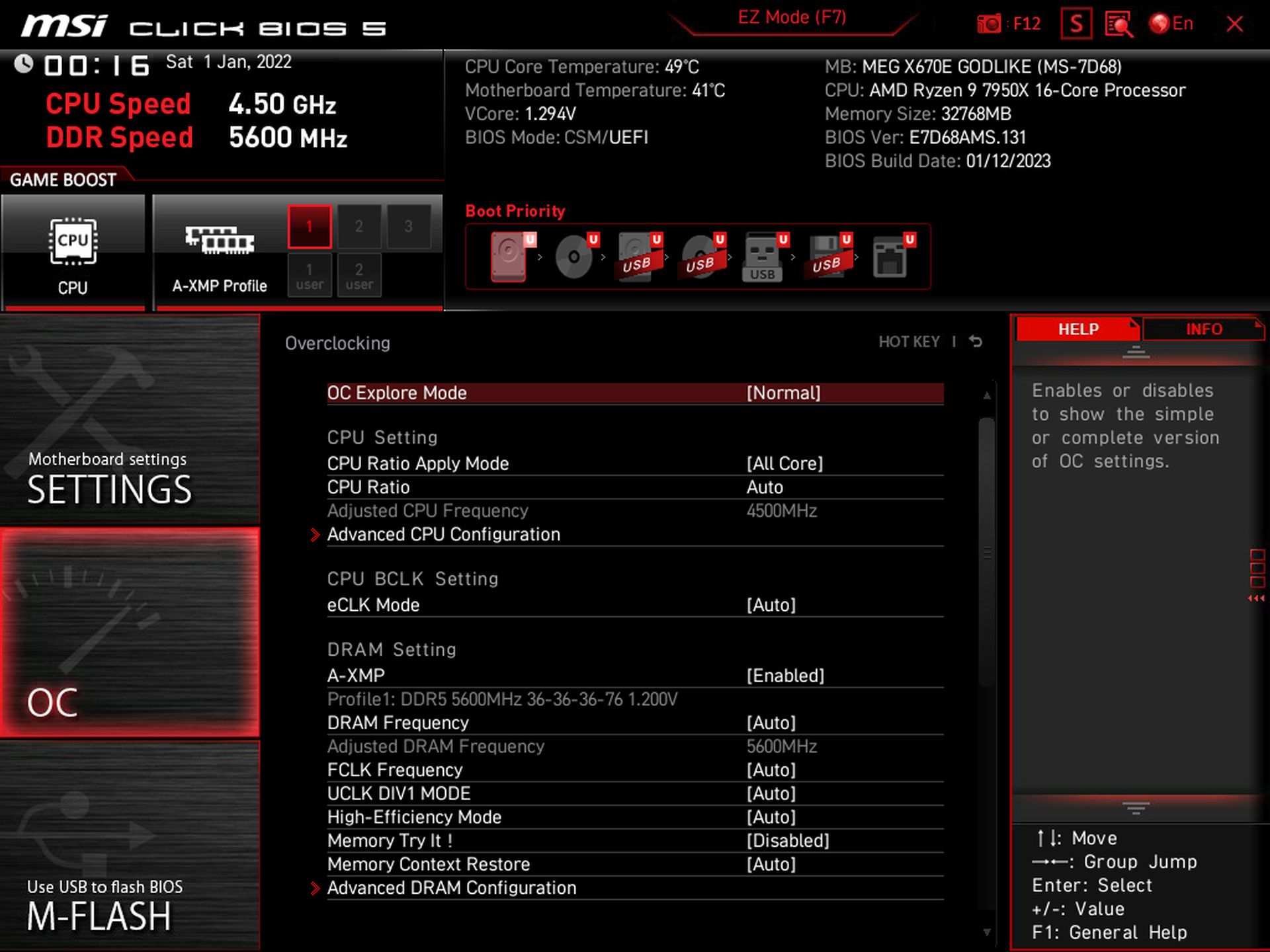

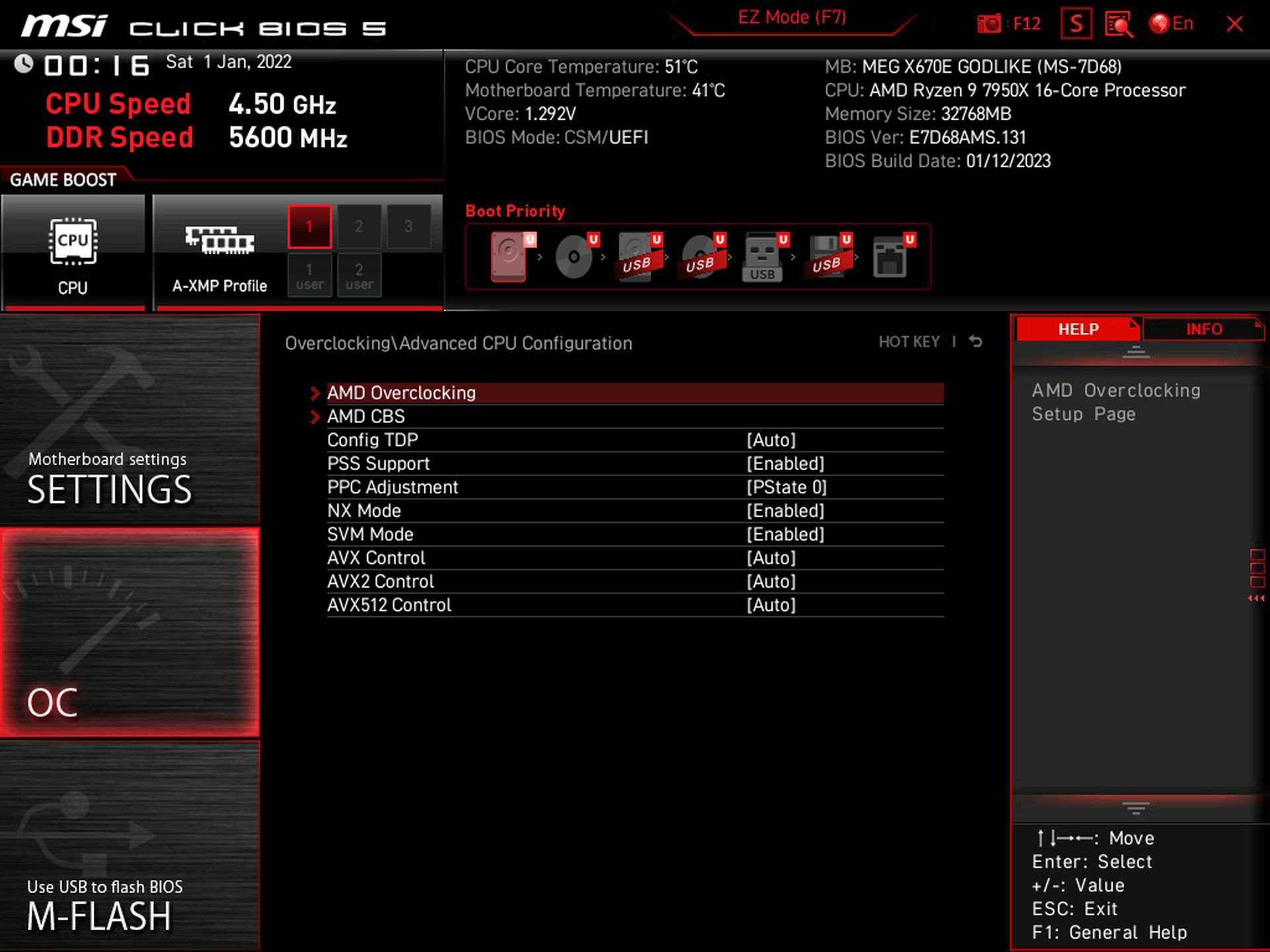






Software
MSI has a single utility, MSI Center, that covers quite a bit of functionality. From hardware monitoring to RGB control with Mystic Light, there are many applets to choose from within the software and a one-stop shop to download all of the company’s utilities. I wish there were some overclocking options here, but for those looking to use the Gamebar feature, Super Charger, or any other utilities MSI offers, they will all be at your fingertips in MSI Center.
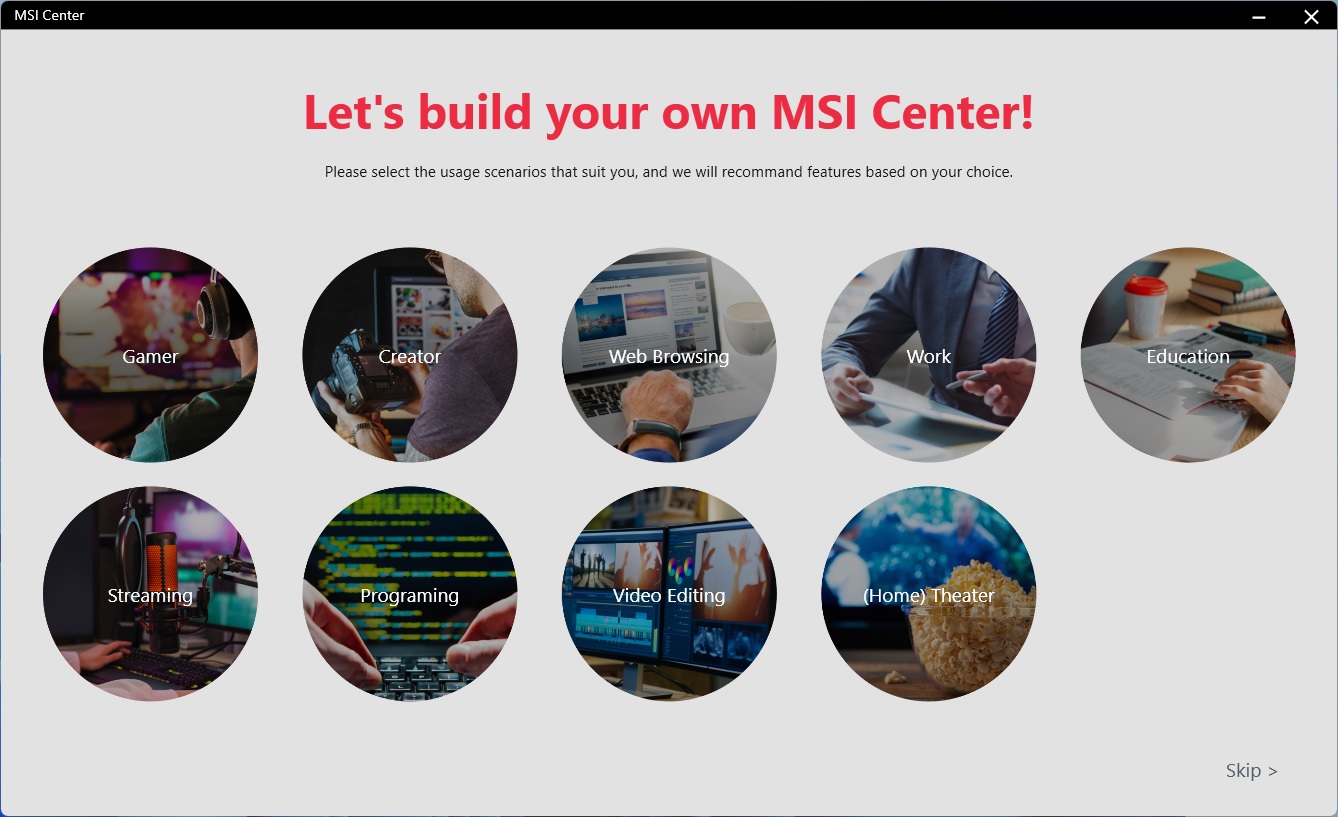




MORE: Best Motherboards
MORE: How To Choose A Motherboard
MORE: All Motherboard Content
Current page: MSI X670E Godlike: Specs and Features
Next Page Gigabyte Z790 Aorus Extreme: Specs and Features
Joe Shields is a staff writer at Tom’s Hardware. He reviews motherboards and PC components.
-
evdjj3j I'm surprised MSI uses the name Godlike. I could see that turning off a lot of Christians.Reply -
Avro Arrow They call them "Flagship" motherboards.Reply
I call them "Irrelevant motherboards that people do not buy." :LOL:
Seriously though, these really are irrelevant to most people because no matter who is king at this level, things can be very different at the price points that most people are willing to pay.
Like, if I were in the market for an X670E board, I'd be looking at the ASRock X670E PG Lightning. ASRock isn't even represented here, probably because they don't think that there is a need for anything more expensive than a Taichi. -
Elusive Ruse Can you guys focus on B650 boards as well? All you seem to review is stuff that lands the manufacturers juicy dough.Reply -
simonharris314 Can I just ask how you managed to get an Intel Core i9-13900K running on an AM5 motherboard?Reply
Maybe the test system needs to be looked at?
H -
jxdking Why testing with DDR5-6000 CL36, not CL30 stuff?Reply
Why testing with RTX 3070, not RTX 4090?
Why MSI's uncore frequency is 1500MHz in CPU-Z, while other 2 boards running on 3000MHz?
PS: They are on different AGESA as well. CPU boosts differently on differently AGESA. -
PlaneInTheSky Dude, if I'm going to buy a $1,000 mobo, it better come with a bar of gold attached to it.Reply
Who even buys this, rich kids from Saudi Arabia or something. -
jdalso When I look at the Asus manual for the reviewed motherboard, the only sharing is between the 2 PCIe slots which will run at x8,x8 when both are used. It has multiple m.2 v5 slots that run without sharing with the PCIe slots.Reply -
MKBL Is this typo? Intel CPU on X670E?Reply
Test System ComponentsCPUIntel Core i9-13900KMemoryKingston Fury Beast DDR5-6000 CL36 (KF560C36BBEAK2-32) GSkill Trident Z DDR5-5600 CL36 (F5-5600U3636C16GX2-TZ5RK) -
waltc3 Nice write up! One thing I would have enjoyed seeing pictured is the back of the motherboards. I've never understood why some reviews don't bother with shots of the back of the reviewed boards. My x570 Master comes standard with a backplate on the back of the board, which not only lends it weight, but most importantly keeps the board from any sort of warp so that the dimensions are always the same (fits the stand-offs perfectly, etc.) Sometimes a pic of the board back can offer some insight into board construction.Reply
All of these mboards disappoint. I'm not going to go Intel, so I'll only compare and look for AMD mboards. MSI/Asus--far too expensive. Just ridiculous, frankly. You're right, the best board buy seems to be the Asroc you've mentioned. The GB board features almost the identical sound hardware that is featured on my x570 Master! They couldn't have improved it? Sad. $360 for my x570 was a great buy, considering the features it offers. The x670e Aorus Master costs $140 more than my x570 Master, but lacks several of the must-have features that made the Master so popular are not present in the x670e Master--including, incredibly, no backplate Clear CMOS button! And last, these are all E-ATX, which is going to require a new case purchase, on top of the rest of it. The 5800X3D is looking better all the time.



